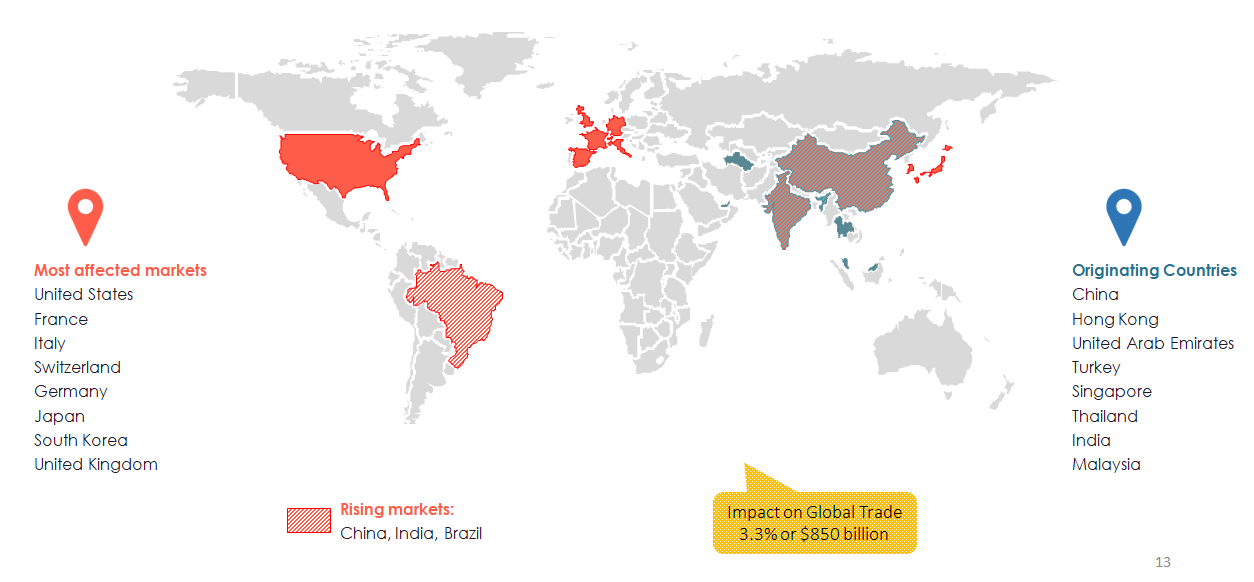
Indian economy is growing as a brisk pace and is now amongst the world’s top 5 GDP nations. It is poised to become an economic powerhouse over the next decade or so. Much of this growth is consumption led as the domestic market is expanding exponentially. While we are witnessing this unprecedented economic development, there are also unscrupulous elements that are fueling illicit trade. Invariably the counterfeit players are grey market operators, and such business results in loss of taxes for the government.
The rate of growth of counterfeit products is more than the rate of growth of the industry. Fake or counterfeit products have today become a huge menace and one of the biggest challenges for the country. This is also impacting India’s image in the global arena.
Indian consumers being price sensitive is easy prey for substitute/duplicate products as such products are usually sold at lower prices. However, there are products in the market that mimic the original products and are thus duping the innocent consumers by selling fake products in original names.

Deceitful counterfeiting is harmful and tantamounts to cheating. Multiple stakeholders are impacted by such illicit trade:
Brand owners
Consumers
Regulatory agencies
Law agencies
Manufacturers and industries
Global economies
The first step in fighting any ill is AWARENESS.
Do you know that counterfeit and illicit products result in an annual loss of Rs 318,615 crores to the economy of India*?
This is just in 5 key sectors – Mobile Phones, FMCG – Household & Personal Goods, FMCG – Packaged Foods, Tobacco Products, and Alcoholic Beverages
Add to this 2 other sectors – Auto Aftermarket and Pharmaceuticals, and the impact would cross a whopping 5 lakh crores, which corresponds to 2% of GDP of India in 2021-22!
Apart from monetary impact to the industry, counterfeit products also pose a risk to health & safety of unsuspecting consumers
*Reference: Illicit Market Report 2022, FICCI
https://www.ficcicascade.in/wp-content/uploads/2022/10/illicit-market-report-2022-NEW-LAYOUT-1.pdf

The reasons why the counterfeiting menace continues to persist are:
At the global level, the beneficiaries of grey market are proponents of parallel economy as the transactions are routed through tax havens – officially or unofficially, and the proceeds tend to find their way into unlawful initiatives including smuggling and terrorism. Broken global supply chains during COVID-19 pandemic and the adoption of e-commerce, where the touch & feel of products is virtual, have given a boost to illicit trade activities. The World Economic Forum (WEF) estimates that all together illicit trade results in an annual drain of whopping US$2.2 trillion on the global economy, which is approximately 3% of world GDP.
Due to its widespread nature and on the account of its impact on world economies, illicit trade is often termed as the crime of the 21st century!
Need we say more?
